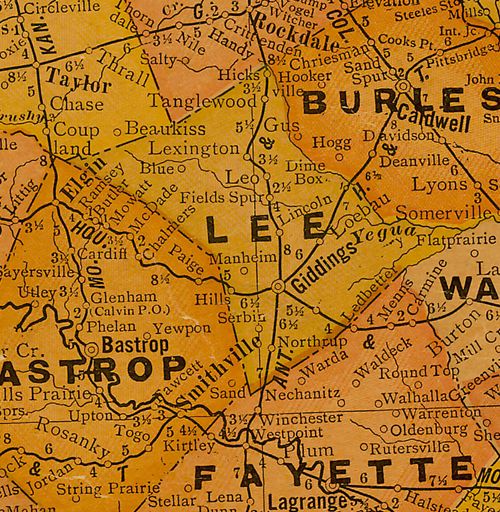Serbin, Texas, and the Wends in Texas. (original) (raw)
THE WENDS IN TEXAS
Life is Hard - and Then You're Assimilated
The Brides Wore Black
by Raoul Hashimoto
"One of the more unusual customs the Wends had was brides being married in black wedding dresses. This was to symbolize the hardships the bride was about to suffer."
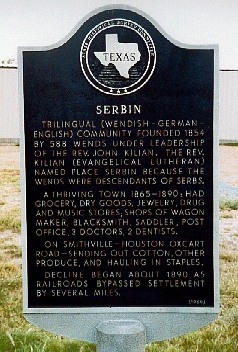
The Historical Marker in front of St. Paul's Lutheran Church
Photo by John Troesser, 2001
Here's an inspirational tale for you. If you're not in the mood for an inspirational tale - then here's an unequaled tale of hardship. Everyone enjoys those.
This is the story of the Wends - an immigrant group that redefines the word endurance. It's no mystery that they have nearly disappeared - the mystery is how they ever survived the hardships of their first few years.
Background:
The Wends or Sorbs (as they were then called in Europe) came from the land immediately South of Berlin where the countries of Poland, Germany and (the former) Czechoslovakia came together. Serbin simply means "Place of the Serbs". Sorb is the old-world spelling of Serb.Their separate language, customs and the fact that they were primarily farmers without representation left them at the mercy of the Prussians. The Prussians weren't at all interested in the welfare of the Wends. For all the Prussians cared - the Wends could sail off to Australia or Texas. Which was exactly what they did.
The Migration to Texas:
Nothing went smoothly for the Wends. Even their migration was as severe as it was unusual. Except for a handful that came to Texas in 1849-50, the rest came to Texas in one mass migration of 600 people.
The first group encountered problems when they were shipwrecked in Cuba. After finally arriving with financial help of Germans in New Orleans - they make it to Texas and ventured into the Hill Country to blend into the German population. They were never to be heard from (as Wends) again.
The second group of 600 was under the leadership of Pastor Johann Kilian. This group chartered a ship and brought along the bell from their church. They crossed from Germany to England, where they were to embark for Texas. In Liverpool there was an outbreak of cholera and they lost many of their number. Some survived long enough to be buried at sea a few days later. Women were widowed. Children were orphaned.After a layover in Ireland where the ship was cleaned and declared disease free, they set sail for Galveston where yellow fever was raging. Immediately after touching Texas soil, they fled Galveston for Houston, rather than contract the dread disease. By this time some of them might've been thinking that life with the Prussians wasn't all that bad.
Settlements:
Pastor Kilian who was more of an intellectual than a farmer guided his people and served as a translator. He spoke Wendish of course, as well as Latin and German. He learned English in Texas.
The group walked the 85 miles from Houston to Austin County and stopped in the towns of Industry and New Ulm. Here they were told the best land had been taken, so they traveled further west to Lee County.Pastor Kilian's little daughter died shortly after arrival and was the first to be buried in the Serbin Cemetery.
Winchesterin Fayette County and Fedor in Lee County became spore colonies from Serbin. Pastor Kilian had two other daughters who married and moved to those towns. Warda and Northrup are the other two towns that had a high percentage of Wends living there.
In the 19th Century the Wends as a group didn't venture far from Lee or Fayette Counties - although in Williamson County, the tiny hamlet of Noack is linked to a Wend by that name. During the Civil War Wendish men went to great lengths to avoid conscription into the Confederate Army - occasionally resorting to plowing their fields while wearing women's clothing. The survival of the Wendish families depended on their crops coming in and the men couldn't risk being taken.
Serbin Today:
A former Serbin schoolhouse has been turned into the Wendish Heritage Museum. Pioneer log cabins of the Kurio and Mertink families along with the cemetery and St. Paul's Lutheran Church, now comprise what is now the core of Wendish culture.
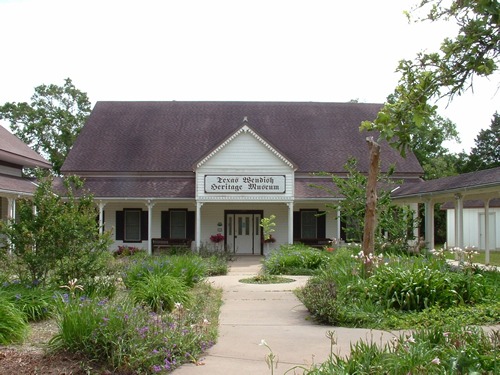
Texas Wendish Heritage Museum
Route 2, Box 155 Giddings, Texas 78942
979-366-2441
2003 photo, wikipedia
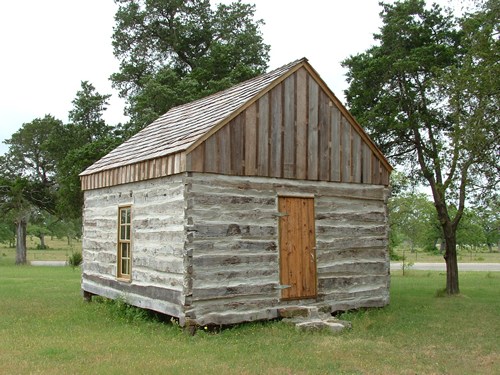
Wendish pioneer log cabin, John Kilian's home, later school and church
On St. Paul Lutheran Church grounds
2008 photo, wikipedia
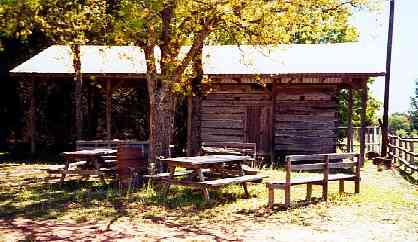
A Wendish log cabin on the grounds of the historical museum
(with protective roof)
Photo by John Troesser, 2001
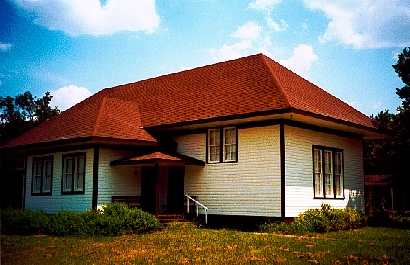
Part of the Museum Complex today in Serbin, Texas
Photo by John Troesser, 2001
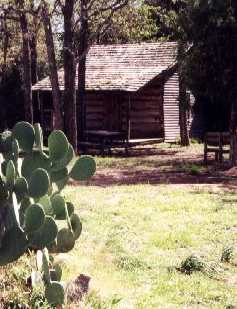
A Wendish log cabin on the grounds of the historical museum
Photo courtesy Cissy CeCe Wong
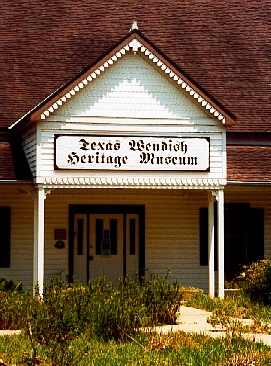
Texas Wendish Heritage Museum
Photo by John Troesser, 2001
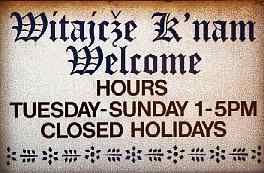
Texas Wendish Heritage Museum welcome sign
Photo by John Troesser, 2001
The town was originally down the road (FM 2239) to the west. There had been a general store until a fire destroyed it in recent years.
One of the more unusual customs the Wends had was brides being married in black wedding dresses. This was to symbolize the hardships the bride was about to suffer. The custom eventually faded - the dresses became gray for a few years and then white.
The bronze bell brought from Germany is now on the campus of Concordia University in Austin. Concordia's main building is Kilian Hall.
TheWendish Church is the site for the Annual Wendish Fest held the last Sunday in September.
Serbin Cemetery
The cemetery has its cedar trees trimmed to resemble thick green discs. Recently damaged tombstones have been left on the ground and modern markers have been placed near them. Some of the markers are ironwork in the European style.
Many tombstone inscriptions verify the hardships the Wends endured.
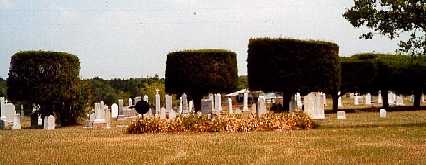
Serbin cemetery with shaped trees
Photo by John Troesser, 2001
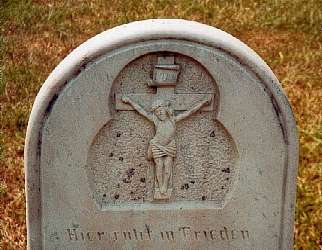
A Wendish Tombstone
Photo by John Troesser, 2001

Johanne Rosine Dube tombstone inscription
Photo by John Troesser, 2001
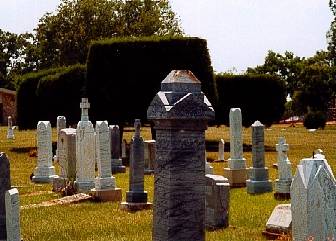
Serbin Trees and Tombstones
Photo by John Troesser, 2001
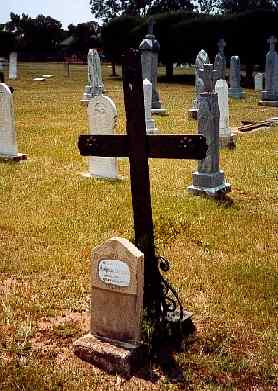
European style headstone
Photo by John Troesser, 2001
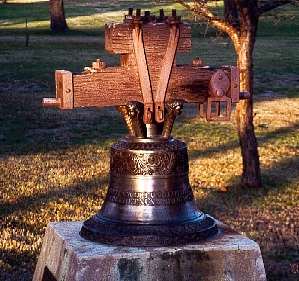
The original bell the Wends brought from home
Photo by John Troesser, 2001
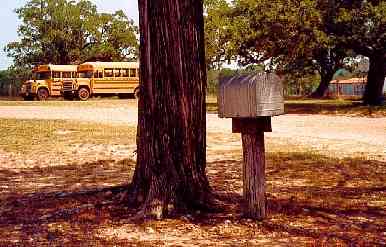
A Mailbox in Serbin
ZIP Code 78942
Photo by John Troesser, 2001
| � John Troesser Source: The information for this feature comes primarily from the well-researched book: THE WENDISH TEXANS by Sylvia Ann Grinder. This small (120 page) volume is in The Texians and the Texans Series published by the Institute of Texas Cultures in San Antonio. Texas Wendish Heritage Museum website: http://wendish.concordia.edu/# |
|---|
Texas Escapes, in its purpose to preserve historic, endangered and vanishing Texas, asks that anyone wishing to share their local history, stories, landmarks and vintage/historic photos, please contact us.

